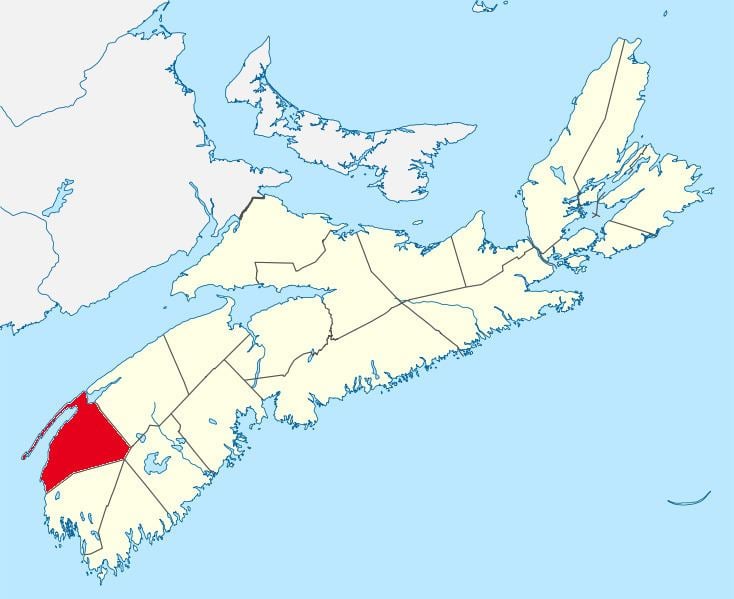Country Canada Incorporated April 17, 1879 Area 2,515 km² University Université Sainte-Anne | Established 1837 Population 17,323 (2016) | |
 | ||
Points of interest Admiral Digby Museum, Annapolis Basin, Mavillette Beach Provincial, Brier Island Lighthouse, Lighthouse Destinations | ||
Digby County is a county in the Canadian province of Nova Scotia.
Contents
- Map of Digby County NS Canada
- History
- Demographics
- Communities
- Access routes
- Museums
- Notable people
- References
Map of Digby County, NS, Canada
History
Taking its name from the Township of Digby, which had been named in honour of Rear Admiral Robert Digby who dispatched HMS Atalanta to convey loyalists from New York City in the spring of 1783 to Conway, which became known as Digby, Digby County was established in 1837. Previously, from August 17, 1759, when Nova Scotia was first divided into counties, this area had been part of Annapolis County.
In 1861, Digby County was divided into two sessional districts – the Digby and the Clare – that were eventually incorporated as district municipalities in 1879.
In addition to these two district municipalities, the county contains the Town of Digby and part of the Bear River Indian reserve. Also, there is Digby Neck leading into the Bay of Fundy to Long Island and Brier Island.
Demographics
As a census division in the 2016 Census of Population conducted by Statistics Canada, Digby County recorded a population of 17,323 living in 8,043 of its 9,927 total private dwellings, a change of 2999600000000000000♠−4% from its 2011 population of 18,036. With a land area of 2,516.43 km2 (971.60 sq mi), it had a population density of 6.9/km2 (17.8/sq mi) in 2016.
Communities
Access routes
Highways and numbered routes that run through the county, including external routes that start or finish at the county boundary:
Museums
The county's history is preserved at the Admiral Digby Museum as well as several community museums.
